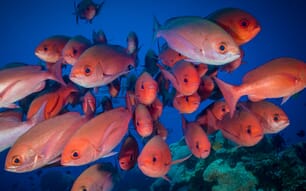The report, by Catherine Reidy Liermann of Ume University, Sweden, and three coauthors, analyzed 397 ecologically distinct freshwater regions around the world and plotted the occurrence of dams greater than 15 meters high. This approach enabled the researchers to assess the amount of obstruction the dams caused.
The authors then examined location data for fish species believed to be at risk of extinction because they are restricted to a specific region or because they have to migrate up rivers as part of their life cycle. This allowed the researchers to identify regions where dams pose the biggest risk to fish species. Factoring in where there has been additional habitat alterationa known risk for many fishesallowed the authors to further refine their list of the danger zones.
The results pointed to Murray-Darling Province (Australia), Southern Italy, the Lower and Middle Indus Basin, West Korea, the Upper Paran (southern Brazil), the South Atlantic coast of the United States, and Mobile Bay ecoregions as having notable numbers of fish species at risk and heavy dam obstruction. Other parts of the United States in the 18 ecoregions deemed to present the greatest risks worldwide include the Great Lakes and part of the Gulf of Mexico. Much of the Danube, Iberia, and the Southern Temperate Highveld in South Africa are also on the list. These 18 ecoregions, the authors write, "merit immediate conservation attention." Eels, shads, lampreys, sturgeons, and salmonids stand out as being especially vulnerable.
The authors explain that their findings will help researchers and planners in identifying important regions where conservation is feasible because the watercourses are relatively unobstructed and are home to at-risk species. The results also flag regions where restorationpossibly even including dam removalis desirable if fishes are to be conserved.
Researchers Map Fish Species at Risk from Dams
GLOBAL - Dams are believed to be one of the biggest threats to freshwater organisms worldwide: They disrupt normal patterns of water and sediment flow, impede migration, and alter the character of spawning and feeding grounds. A shortage of data has until now prevented a thorough global assessment of the threat dams pose to fish species, but a study described in the June issue of BioScience attempts just that.
by Lucy Towers




